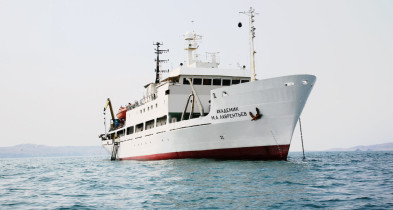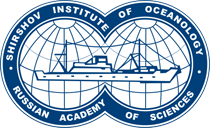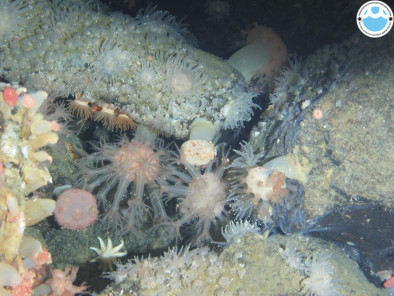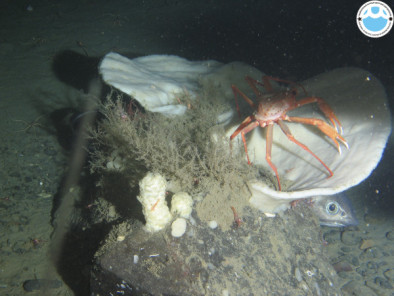 The scientists of the Shirshov Institute of Oceanology RAS together with colleagues from the National Scientific Center for Marine Biology named after Zhirmunsky FEB RAS (NSCMB FEB RAS), Far Eastern Federal University, St. Petersburg State University, Kamchatka branch of the Institute of Geography FEB RAS and the Borisyak Paleontological Institute RAS studied the benthic fauna of the hydrothermal communities of the underwater Piip volcano in the southwestern part of the Bering Sea (55°445 N, 167°263 E, 368–495 m).
The scientists of the Shirshov Institute of Oceanology RAS together with colleagues from the National Scientific Center for Marine Biology named after Zhirmunsky FEB RAS (NSCMB FEB RAS), Far Eastern Federal University, St. Petersburg State University, Kamchatka branch of the Institute of Geography FEB RAS and the Borisyak Paleontological Institute RAS studied the benthic fauna of the hydrothermal communities of the underwater Piip volcano in the southwestern part of the Bering Sea (55°445 N, 167°263 E, 368–495 m).
The work was carried out during cruises 75 (2016) and 82 (2018) of the RV Akademik M.A. Lavrentiev, organized by the NSCMB FEB RAS, using the Comanche 18 underwater remote-controlled vehicle. In total, 130 species of macro- and megafauna have been discovered, of which about 25% are new to science.
According to the results of research in the journal Deep Sea Research in 2023, an article was published:
Rybakova E., Krylova E., Mordukhovich V., Galkin S., Alalykina I., Sanamyan N., Nekhaev I., Vinogradov G., Shilov V., Pakhnevich A., Gebruk A., Adrianov A. Mega- and macrofauna of the hydrothermally active submarine Piip Volcano (the southwestern Bering Sea) // Deep Sea Research Part II: Topical Studies in Oceanography, 2023, Volume 208, Article 105268, DOI:10.1016/j.dsr2.2023.105268
The study of hydrothermal communities is complicated by the fact that traditional methods of collecting bottom material (trawls, bottom grabs, dredges) are not applicable in areas of hydrothermal vents characterized by a complex bottom topography and an extremely mosaic distribution of fauna. As a rule, underwater vehicles, including remote-controlled ones, are used to study such areas.
Back in 1990, during the 22nd voyage of the RV Akademik Mstislav Keldysh, using deep-sea manned submersibles Mir-1 and Mir-2, a biological survey was carried out on the peaks of the Piip volcano and extensive bacterial mats were found, marking the outcrops of hydrothermal solutions, as well as a population of specialized bivalve mollusk Calyptogena pacifica (Vesicomyidae: Pliocardiinae), obligate for restorative biotopes, living in symbiosis with intracellular sulfide-oxidizing bacteria. The age of the Piip volcano dates back to the late Miocene - early Pliocene; it is the westernmost active volcano of the Aleutian Island Arc.
The most important distinguishing features of the habitat near hydrothermal vents are high temperature and water enrichment in reduced compounds (H2S, CH4, etc.), the bacterial oxidation of which produces organic matter by chemosynthesis and/or methanotrophy.





